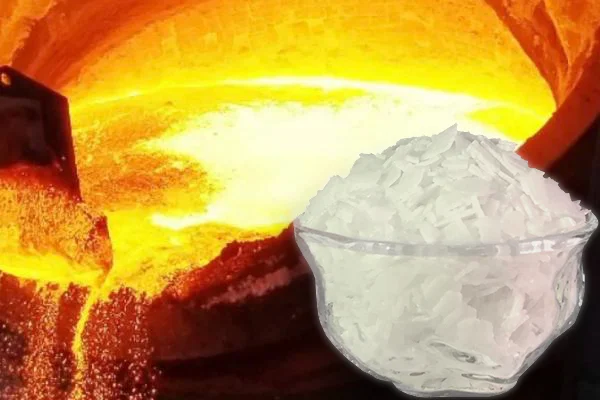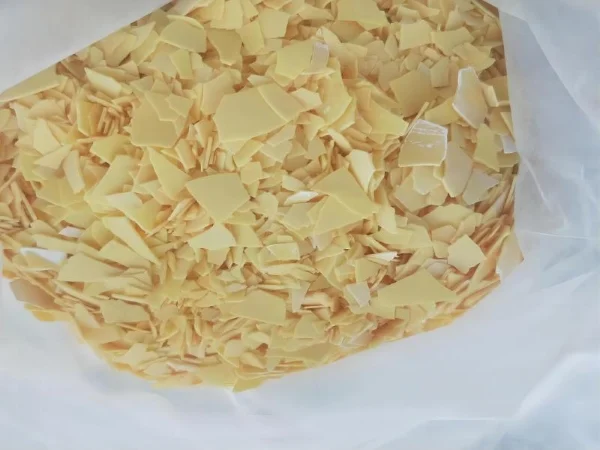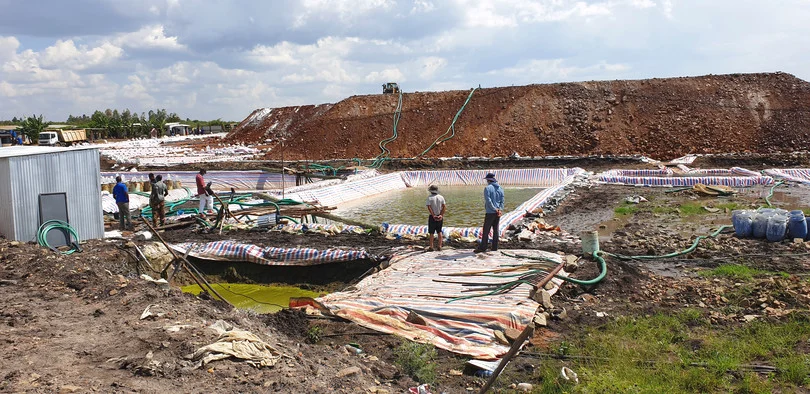I. Introduction
Sodium hydrosulfide (NaHS) is an important inorganic chemical widely used in various fields such as chemical engineering, metallurgy, pharmaceuticals, pesticides, and textiles. This article will introduce the manufacturing methods of Sodium hydrosulfide, including raw materials, process flow, operational steps, equipment, quality control, and safety measures.
II. Raw Materials
The main raw materials for the production of sodium hydrosulfide are sodium hydroxide and hydrogen sulfide. Sodium hydroxide should be of industrial grade with a purity of not less than 96%, and the hydrogen sulfide gas should comply with national standards.
III. Process Flow
The manufacturing process flow for sodium hydrosulfide is as follows:
Preparation of Sodium Hydroxide: Add solid sodium hydroxide to an appropriate amount of water, stir to dissolve, and prepare a sodium hydroxide solution.
Introduction of Hydrogen Sulfide: Introduce hydrogen sulfide gas into the sodium hydroxide solution to react and produce sodium hydrosulfide.
Crystallization: Cool the reaction solution to crystallize and obtain sodium hydrosulfide crystals.
Centrifugal Separation: Perform centrifugal separation on the crystallized material to obtain the finished sodium hydrosulfide product.
Drying: Dry the finished sodium hydrosulfide product obtained from centrifugal separation.
IV. Operational Steps
According to the specified ratio, add solid sodium hydroxide to the dissolution tank, add an appropriate amount of water, and stir to dissolve, preparing a sodium hydroxide solution.
Open the hydrogen sulfide gas valve and introduce hydrogen sulfide gas into the sodium hydroxide solution, controlling the gas flow rate and reaction temperature to produce sodium hydrosulfide.
When the pH of the reaction solution reaches a certain value, stop the gas flow, cool the reaction solution to a specific temperature, and allow sodium hydrosulfide to crystallize.
Place the crystallized material into a centrifuge for centrifugal separation to obtain the sodium hydrosulfide product.
Place the sodium hydrosulfide product obtained from centrifugal separation into a drying device for drying treatment to obtain the final sodium hydrosulfide product.
V. Equipment
The equipment required for the manufacturing of sodium hydrosulfide includes a dissolution tank, reaction kettle, crystallization tank, centrifuge, and drying equipment. These devices should comply with relevant production standards and safety requirements, and they need to be regularly maintained and inspected to ensure safe and normal operation.
VI. Quality Control
To ensure the quality of sodium hydrosulfide products, strict quality control measures must be implemented. This includes the following aspects:
Raw Material Control: Ensure that the quality of sodium hydroxide and hydrogen sulfide gas meets relevant standards.
Reaction Control: Control the gas flow rate, reaction temperature, and time to ensure the quality and yield of the sodium hydrosulfide produced.
Product Testing: Conduct quality testing on the produced sodium hydrosulfide, including purity, moisture content, pH value, and other indicators, to ensure that the product quality meets relevant standards.
VII. Safety Measures
The manufacturing process of sodium hydrosulfide presents certain safety hazards, thus corresponding safety measures need to be taken:
Hydrogen sulfide gas is toxic and harmful; therefore, it is essential to strictly control the gas flow rate and reaction temperature to prevent gas leaks and personnel poisoning incidents.
Safety warning signs and fire-fighting facilities should be set up at the production site to ensure personnel safety and enhance emergency response capabilities.
Operators must undergo professional training to understand the properties of the product and the operating procedures, ensuring the safety and stability of the operation process.
VIII. Conclusion
As an important chemical raw material, the manufacturing of sodium hydrosulfide requires strict control over raw material quality, reaction conditions, and product quality to ensure the quality and yield of the product. Additionally, it is crucial to strengthen the implementation and management of safety measures to ensure the safety and stability of the production process.
- Random Content
- Hot content
- Hot review content
- Booster(Detonating insensitive explosives)
- Cobalt Sulphate Heptahydrate
- Hydrogen Peroxide
- lithium Carbonates 99.5% Battery Level or 99.2% Industry grade 99%
- Pharmaceutical Intermediate Glycine with High Quality 99%
- Diethylene Glycol
- Strontium carbonate
- 1Discounted Sodium Cyanide (CAS: 143-33-9) for Mining - High Quality & Competitive Pricing
- 2Sodium Cyanide 98% CAS 143-33-9 gold dressing agent Essential for Mining and Chemical Industries
- 3Sodium Cyanide 98%+ CAS 143-33-9
- 4China's New Regulations on Sodium Cyanide Exports and Guidance for International Buyers
- 5Anhydrous Oxalic acid 99.6% Industrial Grade
- 6Oxalic acid for mining 99.6%
- 7Reagent Grade/Industrial Grade Hydrochloric Acid min.31%
- 1Sodium Cyanide 98% CAS 143-33-9 gold dressing agent Essential for Mining and Chemical Industries
- 2High Quality 99% Purity of Cyanuric chloride ISO 9001:2005 REACH Verified Producer
- 3 High-Quality Sodium Cyanide for Leaching
- 4Powdery emulsion explosive
- 5Industry Grade Electron grade 98% Sulfuric Acid H2SO4 Sulphuric Acid Battery Acid Industrial Sulfuric Acid
- 6Colloidal emulsion explosive
- 7sodium hydrosulfide 70% flakes used Mining Industry












Online message consultation
Add comment: